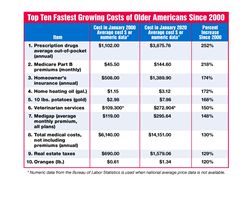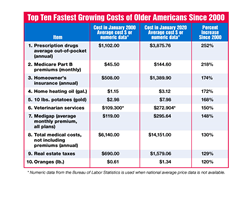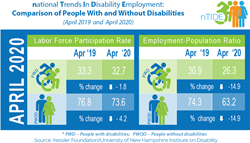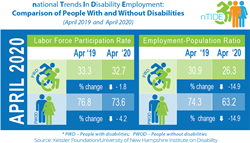
“To put it in perspective, for every $100 worth of groceries a retiree could afford in 2000, they can only buy $70 worth today,” says Mary Johnson, Policy Analyst for the Senior Citizens League.
WASHINGTON (PRWEB)
May 12, 2020
Social Security benefits have lost 30 percent of buying power since 2000, according to the latest Social Security Loss of Buying Power study released today by The Senior Citizens League (TSCL). “This year’s study found a 3 percentage point gain in the buying power of Social Security benefits over 2019,” says study author Mary Johnson, a Social Security policy analyst for the League. “That should indicate that most retirees may have seen at least some prices come down on certain items — such as lower electric bills, as well as lower prices on eggs, fresh fruits, and vegetables.
“On the other hand, when there are lower prices — this is a signal of deflation — which means a lower cost-of-living adjustment (COLA) is on the way,” Johnson says. This year’s 1.6 percent COLA was already low to begin with. “The recent unprecedented plunge oil prices have all but wiped out the prospect of a Social Security cost-of-living adjustment (COLA) for next year,” Johnson says.
The study, which examined price changes from January of 2019 to January of this year, found that, since 2000, the buying power of Social Security benefits improved 3 percentage points in 2020— from a loss of 33 percent as of 2019 to 30 percent in 2020. Between January of 2000 and January of 2020, Social Security COLAs increased Social Security benefits by 53 percent, but the costs of goods and services purchased by typical retirees rose almost twice as much — 99.3 percent. Medicare premiums and out-of-pocket costs, housing, and homeowner’s insurance— were among the most rapidly – rising costs over the past year.
Based on consumer price index (CPI) data through April of this year, Johnson estimates that the COLA for 2020 will be zero. That estimate might change, since there are still five months of consumer price index data to be collected before the Social Security Administration announces the COLA in October.
Participants in The Senior Citizens League’s surveys indicate that household medical expenses consume a significant portion of their monthly income. More than 39 percent of respondents to a recent survey say that they spend more than $750 per month on all Medicare and other healthcare costs. In 2020, the average Social Security benefit is $1,460. The 1.6 percent COLA raised the average Social Security benefit by only $23.40 per month this year. The following chart illustrates ten of the fastest growing retiree costs since 2000.
A person who retired in 2000 with an average Social Security benefit of $816 per month — would have $1,246.20 per month by 2020. However, because retiree costs are rising at a substantially faster pace than the COLA, that individual would require a Social Security benefit of $380.00 more per month, or a total of $1,626.20 in 2020, just to maintain his or her 2000 level of buying power.
The study examined the increase in costs of 40 key items between 2000 and January 2020. The items were chosen because they are typical of the costs of most Social Security recipients, and include expenditures like the Medicare Part B premium, that are not measured by the index currently used to calculate the COLA. Of the 40 items analyzed, 26 exceeded the the COLA over the same period while 14 were lower than the COLA. “This study illustrates why legislation is needed to provide a more fair and adequate COLA,” Johnson says. “To put it in perspective, for every $100 worth of groceries a retiree could afford in 2000, they can only buy $70 worth today,” Johnson adds.
To help protect the buying power of benefits, TSCL supports legislation that would provide a modest boost in benefits and base COLAs on the Consumer Price Index for the Elderly (CPI-E) or guarantee a COLA no lower than 3 percent. To learn more, visit http://www.SeniorsLeague.org.
With 1.2 million supporters, The Senior Citizens League is one of the nation’s largest nonpartisan seniors groups. Its mission is to promote and assist members and supporters, to educate and alert senior citizens about their rights and freedoms as U.S. Citizens, and to protect and defend the benefits senior citizens have earned and paid for. The Senior Citizens League is a proud affiliate of The Retired Enlisted Association. Visit http://www.SeniorsLeague.org for more information.
ALSO AVAILABLE TO JOURNALISTS: Social Security Loss of Buying Power report including study methodology available for download.
Share article on social media or email:



















